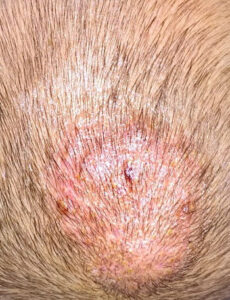Ringworm Scalp, Tinea Capitis
Ringworm Scalp, Tinea Capitis
Tinea capitis is the ringworm worm of scalp. It is a fungal infection of scalp and shafts of hair. Usually it appears as itchy, scaly, bald patches on the head. It is a highly contagious infection and occur mostly in toddlers and school-age children.
Symptoms
Signs and symptoms of ringworm of scalp are:
- Round patches of scaly skin one or more in number where the hair has broken off at or just above the scalp
- Slowly expanding or enlarging patches
- Gray, scaly or reddened area
- Small black dots on the patches where the hair has broken off at the scalp
- Brittle and fragile hair being easily pulled out
- Scalp will have tender and painful areas
Causes
Tinea capititis is caused by one of the mold-like fungi called dermatophytes. This fungi attack the outer layer of skin on the hair shaft and scalp. Ringworm isn’t a result of infestation of worm. The name of disorder refers to the ring-like pattern of appearance of infection on skin. This is a contagious infection and transmitted from human to human, object to human, animal to human.
Complications
- Kerion: painful and severe inflammation of the scalp.
- Kerion appears as raised, soft swelling with draining pus. It causes thick, yellow crusting on the scalp.
Diagnosis
Diagnosis of this infection depends upon detailed medical history and complete general physical examination of the patient. Sample of hair and skin can be taken for examination under microscope.
Treatment
Treatment options include:
- Antifungal medications for at least six weeks or more.
- Washing hair with prescription-strength medicated shampoo.
